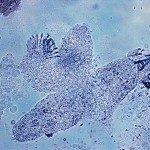About
Susan K. Pierce, National Institute of Allergy and Infectious Diseases, National Institute of Health, USA
Cerebral malaria (CM), the deadliest complication of Plasmodium falciparum infections, accounts for the majority of the over 400,000 malaria deaths each year in young African children. Despite the use of effective anti-malaria chemotherapy, CM mortality rates are high (15-25%) and children who survive often suffer from severe neurological sequalae. Thus, the public health burden from CM is enormous. It is currently thought that cerebral manifestations in humans results from sequestration of infected red blood cells in the brain vasculature, which induces inflammation and fatal brain swelling. Unfortunately, therapies based on this mechanism have been unsuccessful, and findings in the mouse model of CM suggest a different mode of pathogenesis involving CD8+ T cells. I will describe the discovery of a therapy that targets T cell glutamine metabolism, the glutamine antagonist, 6-diazo-5-oxo-L-norleucine (DON), and has proven to be highly effective in both blocking disease progression and reversing brain damage in the mouse model of CM. I will also provide evidence using MRI that DON resolves CM-induced edema and blood brain barrier dysfunction, pathologies associated with fatal outcomes in children with CM. Lastly I will present recent results using immunohistochemistry to profile brain tissue from children who succumbed to CM to characterize the immune cell infiltrate, filling a critical gap in our understanding of CM pathology. Based on these studies I will propose that DON is a highly promising adjunctive therapy to treat CM in African children.
Contact : Chetan Chitnis (chetan.chitnis@pasteur.fr)

